Search

An Indian and his beautiful sister attempt to destroy a cavalry patrol trying to deliver a peace treaty to their chief.

Her innocent appearance is just a cover for Last Comic Standing winner Iliza Shlesinger’s acerbic, stream-of-conscious comedy that she unleashes on an unsuspecting audience in her hometown of Dallas in “War Paint,” her first stand-up special.
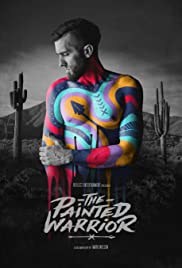
This unique husband and wife duo effect art in motion as they blend the worlds of artistry and athleticism. With ritual body art, The Painted Warrior is brought to life to wage epic battles in the gritty obstacle racing scene.

Documentary on the legendary martial artist Bruce Lee, with a focus on the production of his unfinished film Game of Death. Using interviews and behind-the-scenes footage, Lee aficionado John Little paints a portrait of the world’s most famous action hero, concluding with a new cut of Game of Death’s action finale, reconstructed from Lee’s notes and recently-recovered footage.

With exclusive behind-the-scenes access, seldom-seen footage from the archives and a rare interview with Kirsty Wark, this is the story of a true visionary of British art.

A young boy wanders Eastern Europe during World War II.

In this modest drama, set during World War II, two rival boat families battle it out for supremacy.
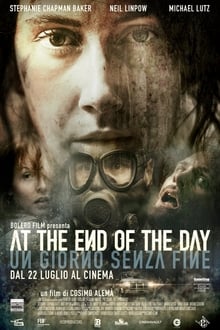
A game of paintball turns deadly when three unhinged and deranged ex-soldiers play a twisted mind game of catch and release with their unsuspecting victims. This quickly leads to a bloody man hunt where everyone is a target and no one is safe.
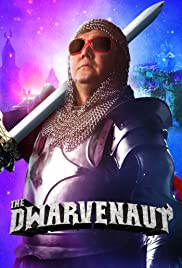
THE DWARVENAUT gives viewers a glimpse into the unique mind of Brooklyn-based artist and entrepreneur Stefan Pokorny. Director Josh Bishop weaves memories of Stefan’s tumultuous childhood with his current struggles and triumphs to paint a mesmerizing portrait. An art prodigy obsessed from a young age with Dungeons & Dragons, Stefan navigates absurd adventures—from Wisconsin to Venice to Bushwick—on a quest to bring his most personal project to life through an ambitious multimillion dollar Kickstarter campaign. Part philosopher, part jester, he preaches the virtues of fantasy gaming as a vehicle for uniting the human race on his whimsical, bizarre life’s journey.
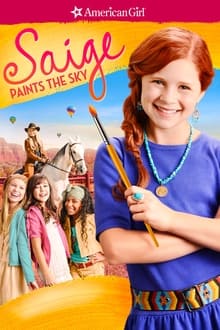
Meet nine-year old Saige, a talented artist with a passion for horses, in this modern-day story about finding your voice! Saige is excited about the new school year, until she discovers that art-her favorite class-has been cut. On top of that, her best friend, Tessa, seems to be spending more and more time with another girl. For help, Saige turns to her grandma Mimi, a well-known artist and horse-woman, who inspires her to take action. Can Saige find the courage to overcome her fears and save the art program-and her friendship with Tessa? Heart-warming, empowering, and fun, it’s a movie for every girl who has ever dreamed big. Written by Anonymous (IMDB.com)

At the times of World War II, accomplished painter and translator Aram flees Istanbul due to political offenses. When he is trapped at the USSR-Georgia borders, his flight turns into a remembrance of things past…

South African filmmaker Jo Menell is most well-known for the cult feminist classic, Dick (1989), which featured 1000 penises accompanied by an audio commentary from women. The nature of that film, however, belies a rich career in film and journalism that spans the Vietnam War, the Allende government in Chile, the emergence of gay rights in San Francisco, a 1981 Bob Marley documentary, an Oscar nominated film about Nelson Mandela (1997), and the Street Talk television series, as well as close relationships with key figures from the 20th Century. Born into a life of privilege, Menell had progressive political inclinations and soon left apartheid South Africa for Britain where he was schooled in the ways and connections of the British ruling class. The film chronicles his amazingly rich and varied life using archival footage alongside a series of interviews conducted with Menell while his portrait was being painted by Cape Town artist Beezy Bailey.

Georg Baselitz: Making Art after Auschwitz and Dresden explores the artist’s brilliant career through his 2007 retrospective exhibition at London’s Royal Academy of Arts. Accompanied by curator Norman Rosenthal, who first exhibited paintings by Baselitz in the early 1970’s, the artist discusses painting, sculpture and the trajectory of his work. The exhibit emphasizes Baselitz ability to create imagery that deals unflinchingly with his position as a post-war artist. In responding to contemporary experience and exploring his own painterly instincts, Baselitz creates symbols which reflect deep-rooted human dilemmas and concerns.

A new breed of crime-fighter now stalks the urban landscape: the anti-graffiti vigilante. These dedicated blight warriors stop at nothing to rid their neighborhoods and cities of street art, stickers, tags, and posters. Yet several of these vigilantes have become the very menace they set out to eliminate. In their relentless attempt to stamp out graffiti, they’ve turned to illegally and destructively painting other people’s property. VIGILANTE VIGILANTE is the story of two filmmakers who set out to expose these mysterious characters and discover a battle of expression that stretches from the streets to academia.

There is no painter in the world both more famous and less known than Edvard Munch. The debt contemporary culture has towards Munch is impressive, from Andy Warhol to Ingmar Bergman, from Marina Abramovich to Jasper Johns. If his painting has become a symbol and at the same time an omen of the tragedies of the twentieth century, his art has travelled new and experimental roads of extraordinary modernity. Today, however, it is his city, Oslo, which sets a turning point for the knowledge of Munch: the birth of a new museum opened in Fall 2021. The documentary will start from there to shed light on a man and an artist with singular charm, a precursor and a master.

American artist Winslow Homer’s illustrations for Harpers’ Weekly magazine earned high praise for their honest portrayal of the Civil War. Discouraged by the horrors he witnessed, Homer abandons his post and heads to the quiet of Houghton Farm to paint. His peace is soon disturbed by two curious teenagers who are intrigued by the cantankerous artist. Unable to shake them off, he asks them to be models. As they pose, Gabe and Fee become fast friends telling white lies as they each hide how painfully the war has shattered their own families. As Homer shares his personal experiences, he urges them to say goodbye to their ghosts and to move forward with their lives. Homer realizes the value of their friendship, as he works on a new painting at the schoolhouse, “Snap the Whip.”

A wanderer meets a monk with magical powers and becomes entranced by a mural of exquisite dancing women. He enters the painting, unaware of the conspiracy behind it, and must rescue the women who are trapped within.

Sousuke Aoyama is a college student who suffers painfully from the loss of his parents in a traffic accident. He meets Kozan Shinoda, a suibokuga (India-ink painting) artist, at an exhibition. Kozan becomes interested in Sousuke and surprisingly accepts him as his disciple. However, Kozan’s niece is dismissive of Sousuke and declares to compete with Sousuke for the “Kozan Award.” Although Sousuke seemed uninterested in painting at first, he gradually becomes drawn to it by each stroke he draws…

In the Realms of the Unreal is a documentary about the reclusive Chicago-based artist Henry Darger. Henry Darger was so reclusive that when he died his neighbors were surprised to find a 15,145-page manuscript along with hundreds of paintings depicting The Story of the Vivian Girls, in What is Known as the Realms of the Unreal, of the Glodeco-Angelinnian War Storm, Cased by the Child Slave Rebellion.

For more than 100 years, the Statue of Liberty has been a symbol of hope and refuge for generations of immigrants. In this lyrical, compelling and provocative portrait of the statue, Ken Burns explores both the history of America’s premier symbol and the meaning of liberty itself. Featuring rare archival photographs, paintings and drawings, readings from actual diaries, letters and newspapers of the day, the fascinating story of this universally admired monument is told. In interviews with Americans from all walks of life, including former New York governor Mario Cuomo, the late congresswoman Barbara Jordan and the late writers James Baldwin and Jerzy Kosinski, The Statue of Liberty examines the nature of liberty and the significance of the statue to American life. Nominated for both the Academy Award ® and the Emmy Award ®, The Statue of Liberty received the prestigious CINE Golden Eagle, the Christopher Award and the Blue Ribbon at the American Film Festival.

At the heart of the film is the story of a young talented artist Kiril, in whose fate persistently puts a weapon in his hand instead of a brush. Demanding from him the life of a warrior, not a painter.

Gillepsie’s term as County Sheriff is coming to an end, and his enemies have found a local businessman, Kerry Madigan, who has high political aspiration, to run against him. They even attempt to enlist Forbes’ support and the support of the local press in painting an unfavorable picture of Gillepsie. Meanwhile, the police suspect Frank Cole, one of Madigan’s employees, of murdering a pregnant woman. When they request a warrant to test Cole’s blood for a DNA match of the dead woman’s baby, the judge, who respects Madigan and his employees, is unwilling to approve it.

After the horror of the Civil War, ‘ignorant’ Christopher Newman made his fortune. He travels to France is search of cultural treasures. He won’t get past the Paris nightlife. After an affair with a haughty painter, he falls in love with the daughter of the late marquis de Bellegarde. She was married off and traumatized by her abusive late husband for the family’s sake. Her elder brother supports their ruthless mother, but junior Valentin is besotted with the artist and strikes a partnership with Christopher.

The tragic story of French naïve painter Séraphine Louis aka Séraphine de Senlis (1864-1942), a humble servant who becomes a gifted self-taught painter. Discovered by prominent critic and collector William Uhde, she came to prominence between the wars grouped with other naïve painters like Henri Rouseau only to descend into madness and obscurity with the onset of Great Depression and World War II.

Helsinki, 1945. The end of the war brings a new sense of artistic and social freedom for painter Tove Jansson. While focusing her artistic dreams on painting, the enchanting tales of the ‘Moomin’ creatures she told to scared children in bomb shelters, rapidly take on a life of their own, bringing international fame.
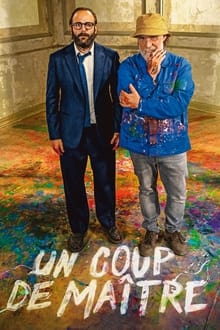
Willing to risk it all, an unscrupulous art dealer and his socially-awkward painter and longtime friend develop an extreme and ludicrous plan to save themselves.
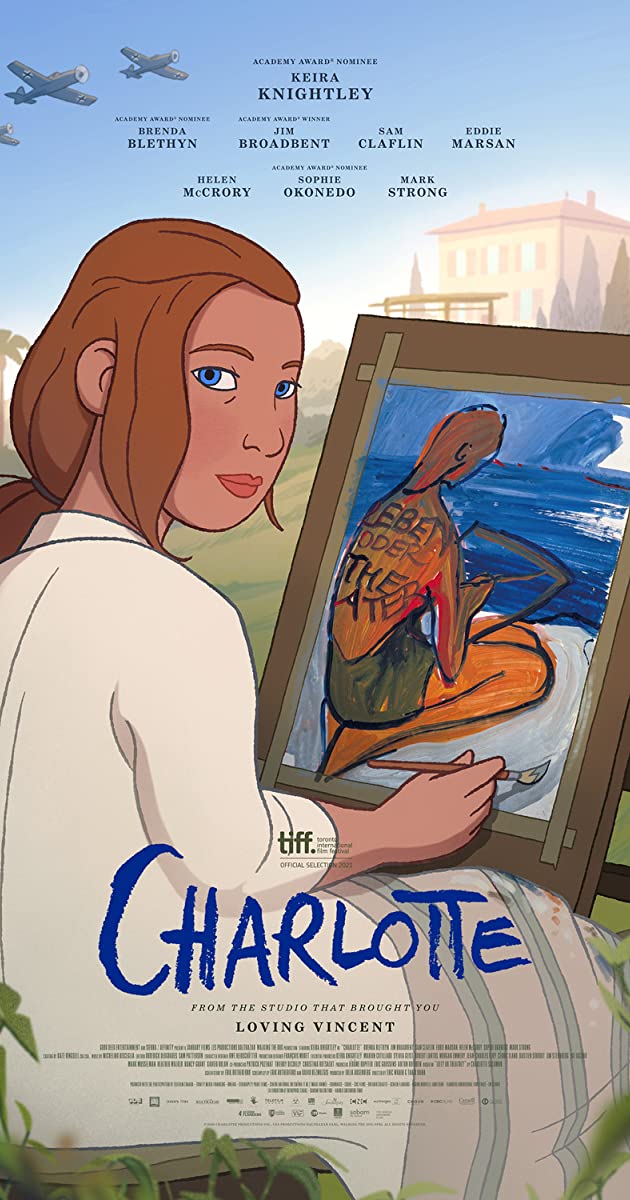
The true story of Charlotte Salomon, a young German-Jewish painter who comes of age in Berlin on the eve of the Second World War. Fiercely imaginative and deeply gifted, she dreams of becoming an artist. Her first love applauds her talent, which emboldens her resolve. When anti-Semitic policies inspire violent mobs, she escapes to the safety of the South of France. There she begins to paint again, and finds new love. But her work is interrupted, this time by a family tragedy that reveals an even darker secret. Believing that only an extraordinary act will save her, she embarks on the monumental adventure of painting her life story.
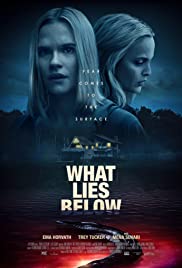
Liberty, a socially awkward 16-year-old, returns from two months at camp to a blindsided introduction of her mother’s fiancé, John Smith, whose charm, intelligence, and beauty paint the picture of a man too perfect to be human.
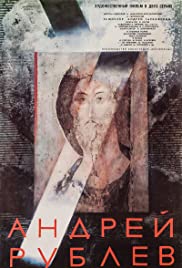
An expansive Russian drama, this film focuses on the life of revered religious icon painter Andrei Rublev. Drifting from place to place in a tumultuous era, the peace-seeking monk eventually gains a reputation for his art. But after Rublev witnesses a brutal battle and unintentionally becomes involved, he takes a vow of silence and spends time away from his work. As he begins to ease his troubled soul, he takes steps towards becoming a painter once again.
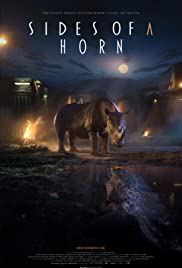
The first film to tell the story of South Africa’s poaching war from both sides of the fence. Based on actual events, and filmed in the townships and game reserves most directly impacted by wildlife crime, this dramatic short film paints an unbiased portrait of a modern war that is tearing apart communities and driving a pre-historic species to the verge of extinction.
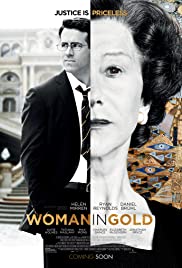
Maria Altmann, an octogenarian Jewish refugee, takes on the Austrian government to recover a world famous painting of her aunt plundered by the Nazis during World War II, she believes rightfully belongs to her family. She did so not just to regain what was rightfully hers, but also to obtain some measure of justice for the death, destruction, and massive art theft perpetrated by the Nazis.
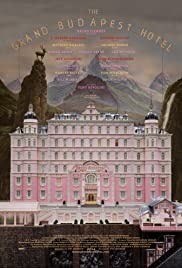
The Grand Budapest Hotel tells of a legendary concierge at a famous European hotel between the wars and his friendship with a young employee who becomes his trusted protégé. The story involves the theft and recovery of a priceless Renaissance painting, the battle for an enormous family fortune and the slow and then sudden upheavals that transformed Europe during the first half of the 20th century.
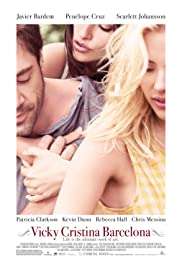
Two girlfriends on a summer holiday in Spain become enamored with the same painter, unaware that his ex-wife, with whom he has a tempestuous relationship, is about to re-enter the picture.
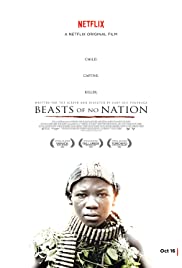
A drama based on the experiences of Agu, a child soldier fighting in the civil war of an unnamed African country. Follows the journey of a young boy, Agu, who is forced to join a group of soldiers in a fictional West African country. While Agu fears his commander and many of the men around him, his fledgling childhood has been brutally shattered by the war raging through his country, and he is at first torn between conflicting revulsion and fascination Depicts the mechanics of war and does not shy away from explicit, visceral detail, and paints a complex, difficult picture of Agu as a child soldier.

Quite by accident, a film director arrives in town a day early. With time to kill before his lecture, he stops by a restored palace and meets a fledgling artist. She’s never seen any of his films, but knows he’s famous. They talk, they go to her workshop to look at her paintings, and they have sushi and soju. More conversation follows, along with more drinks, and then an awkward get-together with friends where all sorts of secrets are revealed. All the while, they may or may not be falling for each other. Then, quite unexpectedly, we begin again, but now things appear somewhat different. An uncanny romantic comedy, RIGHT NOW, WRONG THEN is a deliciously intricate masterwork from filmmaker Hong Sangsoo.
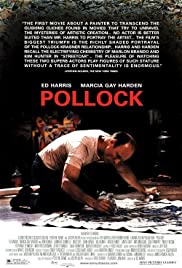
In August of 1949, Life Magazine ran a banner headline that begged the question: “Jackson Pollock: Is he the greatest living painter in the United States?” The film is a look back into the life of an extraordinary man, a man who has fittingly been called “an artist dedicated to concealment, a celebrity who nobody knew.” As he struggled with self-doubt, engaging in a lonely tug-of-war between needing to express himself and wanting to shut the world out, Pollock began a downward spiral.
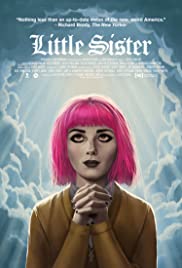
October, 2008. Young nun Colleen is avoiding all contact from her family, until an email from her mother announces, “Your brother is home.” On returning to her childhood home in Asheville, NC, she finds her old room exactly how she left it: painted black and covered in goth/metal posters. Her parents are happy enough to see her, but unease and awkwardness abounds. Her brother is living as a recluse in the guesthouse since returning home from the Iraq war. During Colleen’s visit, tensions rise and fall with a little help from Halloween, pot cupcakes, and GWAR. Little Sister is a sad comedy about family – a schmaltz-free, pathos-drenched, feel good movie for the little goth girl inside us all.
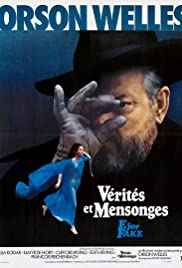
Orson Welles’ final film documents the lives of infamous fakers Elmyr de Hory and Clifford Irving. De Hory, who later committed suicide to avoid more prison time, made his name by selling forged works of art by painters like Picasso and Matisse. Irving was infamous for writing a fake autobiography of Howard Hughes. Welles moves between documentary and fiction as he examines the fundamental elements of fraud and the people who commit fraud at the expense of others.

In late spring, 1890, Vincent moves to Auvers-sur-Oise, near Paris, under the care of Dr. Gachet, living in a humble inn. Fewer than 70 days later, Vincent dies from a self-inflicted gunshot wound. We see Vincent at work, painting landscapes and portraits. His brother Theo, wife Johanna, and their baby visit Auvers. Vincent is playful and charming, engaging the attentions of Gachet’s daughter Marguerite (who’s half Vincent’s age), a young maid at the inn, Cathy a Parisian prostitute, and Johanna. Shortly before his death, Vincent visits Paris, quarrels with Theo, disparages his own art and accomplishments, dances at a brothel, and is warm then cold toward Marguerite.
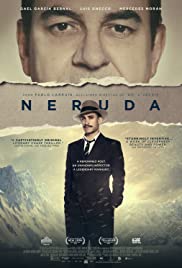
It’s 1948 and the Cold War has arrived in Chile. In the Congress, prominent Communist Senator and popular poet Pablo Neruda accuses the government of betraying the Party and is stripped of his parliamentary immunity by President González Videla. The Chief of Investigative Police instructs inspector Óscar Peluchonneau to arrest the poet. Neruda tries to escape from the country with his wife, the painter Delia del Carril, but they are forced to go underground.